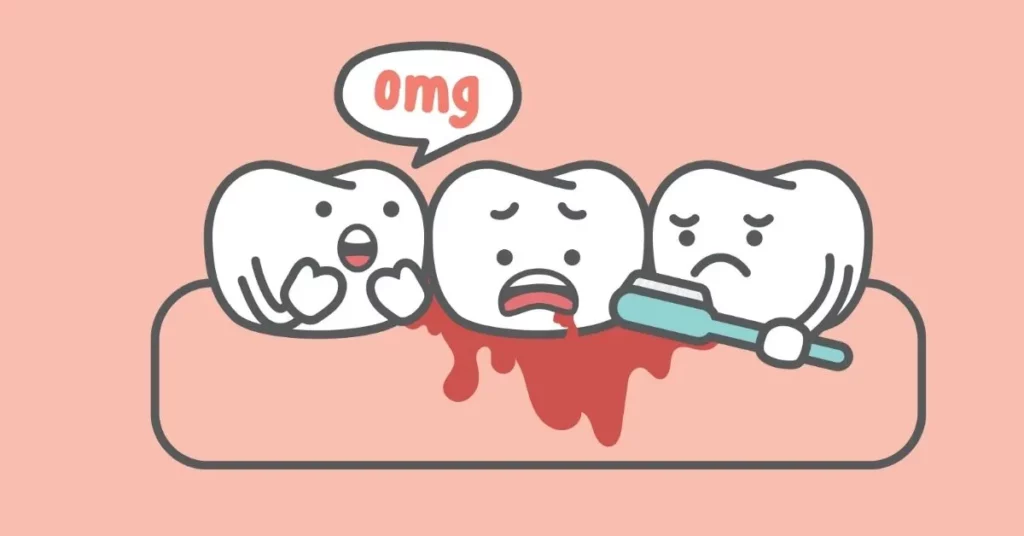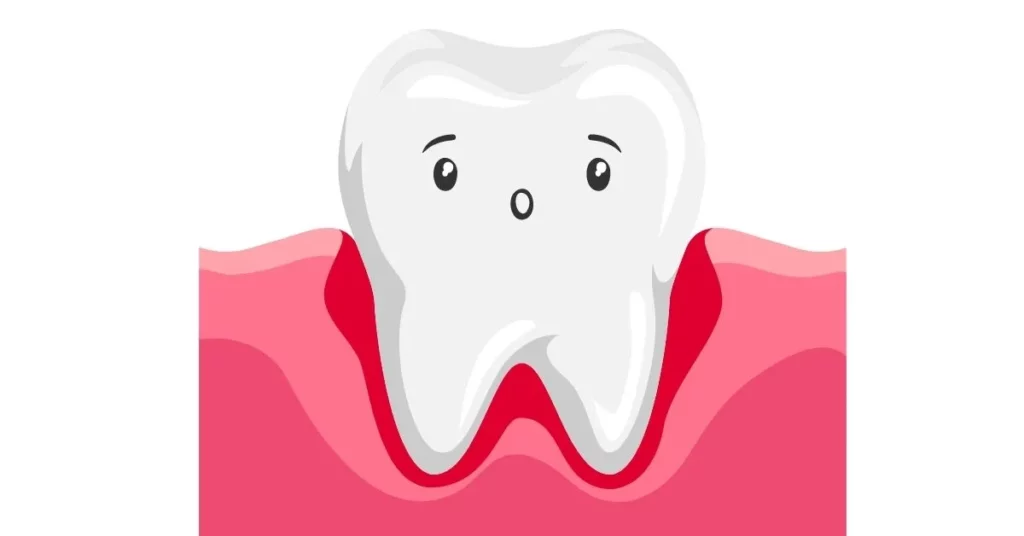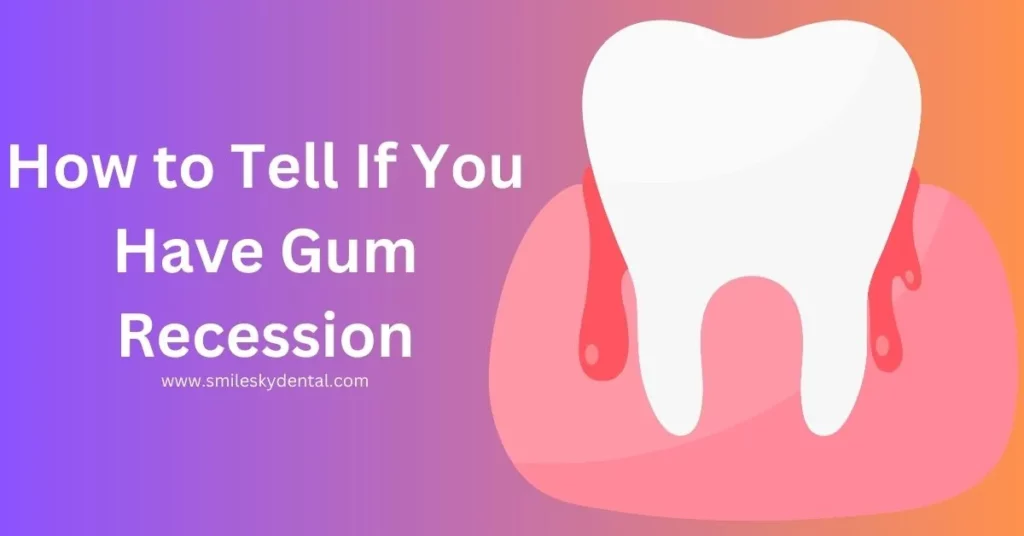Good oral health is essential for a confident smile and general well-being. Gum recession is a common dental problem that many people face. When the gum tissue covering the teeth wears away or pulls back, the tooth roots are exposed.
This article will explore the various signs and symptoms of gum recession, including receding gums on one tooth, gum recession sensitivity, gum recession on canine teeth, and how to tell if you have gum recession. Let’s delve into how you can identify if you have gum recession and understand its implications.
Receding Gum on One Tooth: Signs to Look Out For
If you notice thin gums or a recessed tooth, it could be an indication of receding gums on one tooth. Keep an eye on your gum line, since a retreating gum line on one tooth may indicate gum recession. If you notice your gums receding around one tooth, you must act quickly to avoid future difficulties.
Receding Gums on Canine Teeth: A Cause for Concern

Canine teeth are pointed teeth located at the corners of our mouths. If you notice thin gums or a recessed appearance in these teeth, it may be a sign of gum recession on canine teeth. Thus paying attention to these symptoms can help you catch gum recession early and seek necessary treatment.
Gum Recession Sensitivity: Unpleasant Sensations to Watch For
Gum recession can lead to increased sensitivity in your teeth. If you experience heightened sensitivity to hot or cold temperatures, it could be due to gum recession sensitivity. Sensitivity may also be accompanied by painful gum recession, which can cause discomfort and affect your daily life.
Normal Gums vs Receding Gums: Spotting the Differences
Understanding the distinction between normal and receding gums is critical. Normal gums protect the tooth roots and appear firm and pink. Whereas receding gums pull back, exposing the tooth roots and making them appear more sensitive and red.
Gum Recession Symptoms: Identifying the Signs
Spotting receding gums symptoms early can help address the issue effectively. Common gum recession signs include tooth sensitivity, visible tooth roots, longer-looking teeth, and bleeding or swollen gums. If you notice any of these symptoms, it’s advisable to consult a dentist.
Receding Gum Nerve Pain: Coping with Painful Gum Recession

Gum recession can cause nerve pain, leading to discomfort in your teeth and gums. Painful gum recession can affect eating, drinking, and overall oral hygiene. Seeking professional dental advice is essential to manage gum recession nerve pain effectively.
Gum Recession Bone Loss: A Serious Concern
In severe circumstances, gum recession might result in bone loss. When the gum tissue recedes, the tooth roots are exposed. It makes them vulnerable to decay and bone loss. A dentist’s timely action can help prevent future bone loss and maintain your dental health.
FAQs
How to tell if you have gum recession?
Symptoms of gum recession include tooth discomfort, exposed tooth roots, and swollen or bleeding gums. Hence if you suspect gum recession, you should see a dentist for a comprehensive examination.
Is gum recession common?
Gum recession is a common dental problem that affects many people. Therefore it can be caused by a variety of circumstances, including gum disease, forceful brushing, or genetics.
What do receding gums look like?
Receding gums may appear as if they have pulled back from the teeth. It exposes the tooth roots. The gums might also look red, swollen, and sensitive.
How common is gum recession?
Gum recession is relatively common. It can affect people of all ages. However regular dental check-ups and proper oral hygiene can help prevent or manage gum recession effectively.
Does receding gums hurt?
Yes, gum recession can cause sensitivity and discomfort, especially when the tooth roots are exposed. Painful gum recession can affect eating, drinking, and overall oral health.
Why are my gums receding so fast?
Gum recession can be caused by a variety of causes such as excessive brushing, gum disease, poor dental hygiene, and hereditary predisposition. Identifying the root problem is critical for effective treatment.
How do I know if I have receding gums?
Symptoms of receding gums include oral sensitivity, exposed tooth roots, longer-looking teeth, and bleeding or swollen gums. If you suspect gum recession, see a dentist for an examination.
Why is my gum lower on one tooth? Why is my gum receding around one tooth?
Gum recession around a single tooth can occur for a variety of causes. These include gum disease, misaligned teeth, or traumatic gum damage. A dental specialist can diagnose the problem and propose the best course of action.
Conclusion
Being aware of the signs and symptoms of gum recession is essential for maintaining good oral health. Whether you notice receding gums on one tooth or experience gum recession sensitivity, it’s crucial to seek dental attention promptly.
Regular check-ups at Smile Sky Family Dental can help identify gum recession early. Also, it can ensure proper care. Remember, early detection and appropriate treatment can help preserve your smile. It’s important in keeping your gums healthy for years to come.


